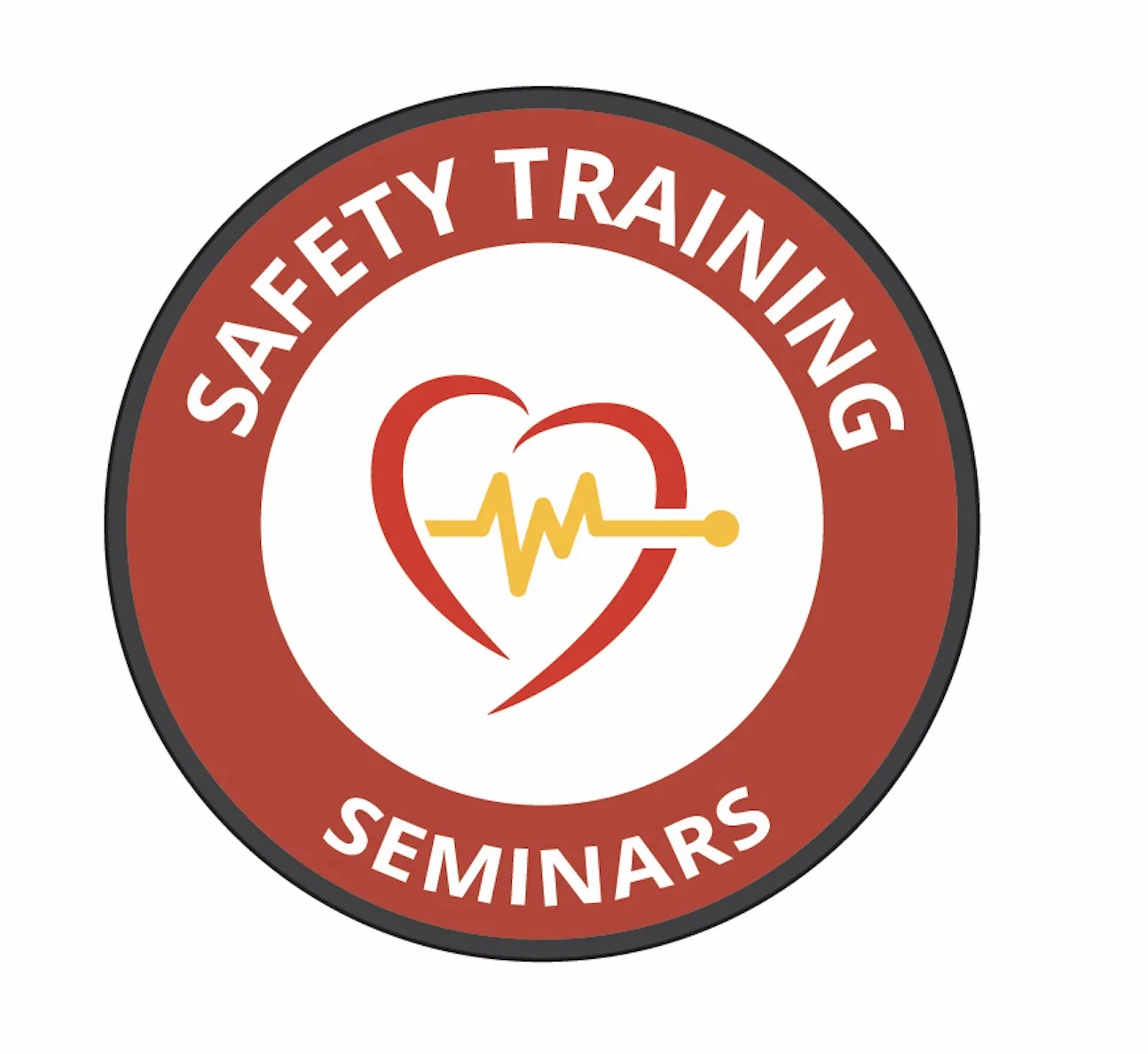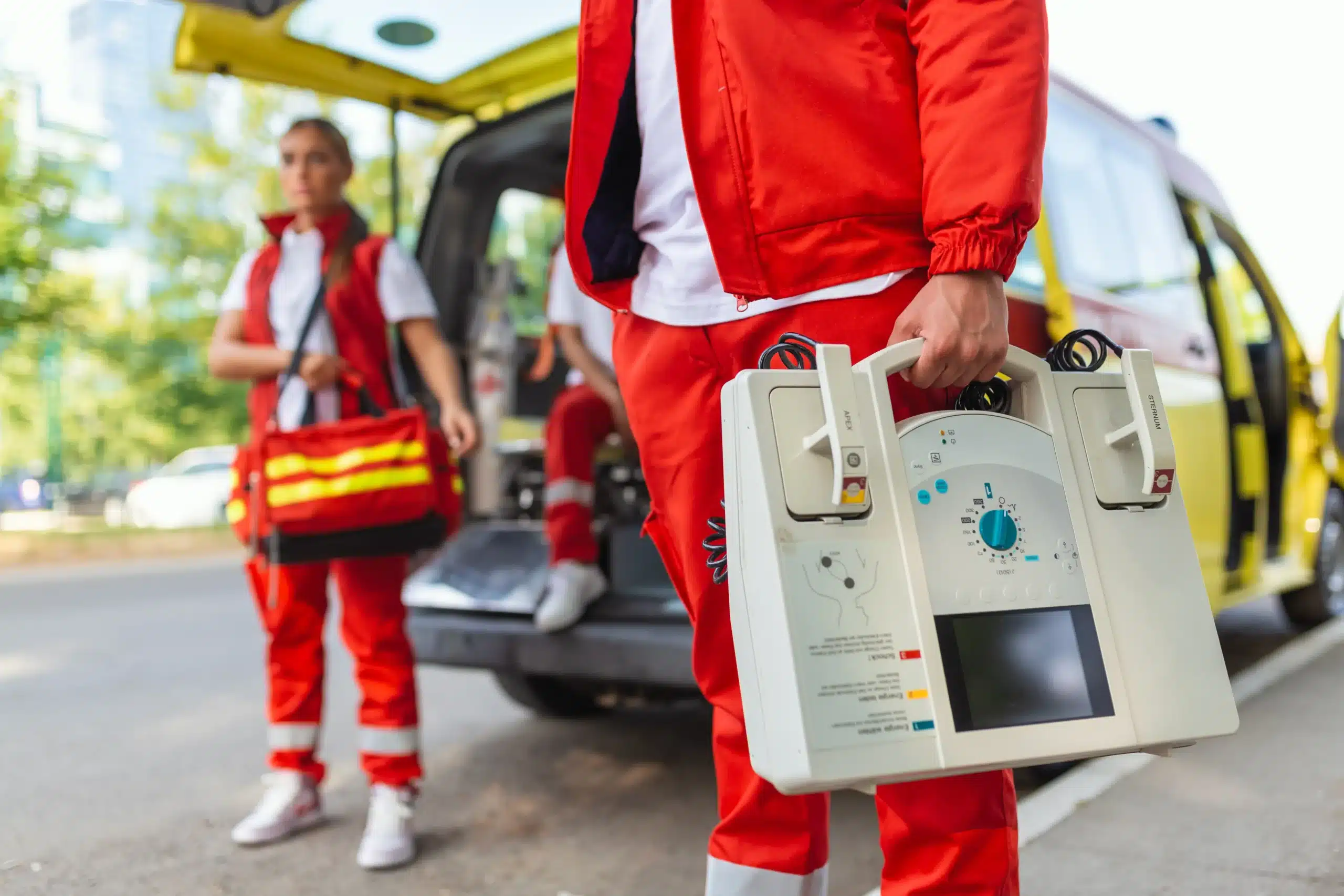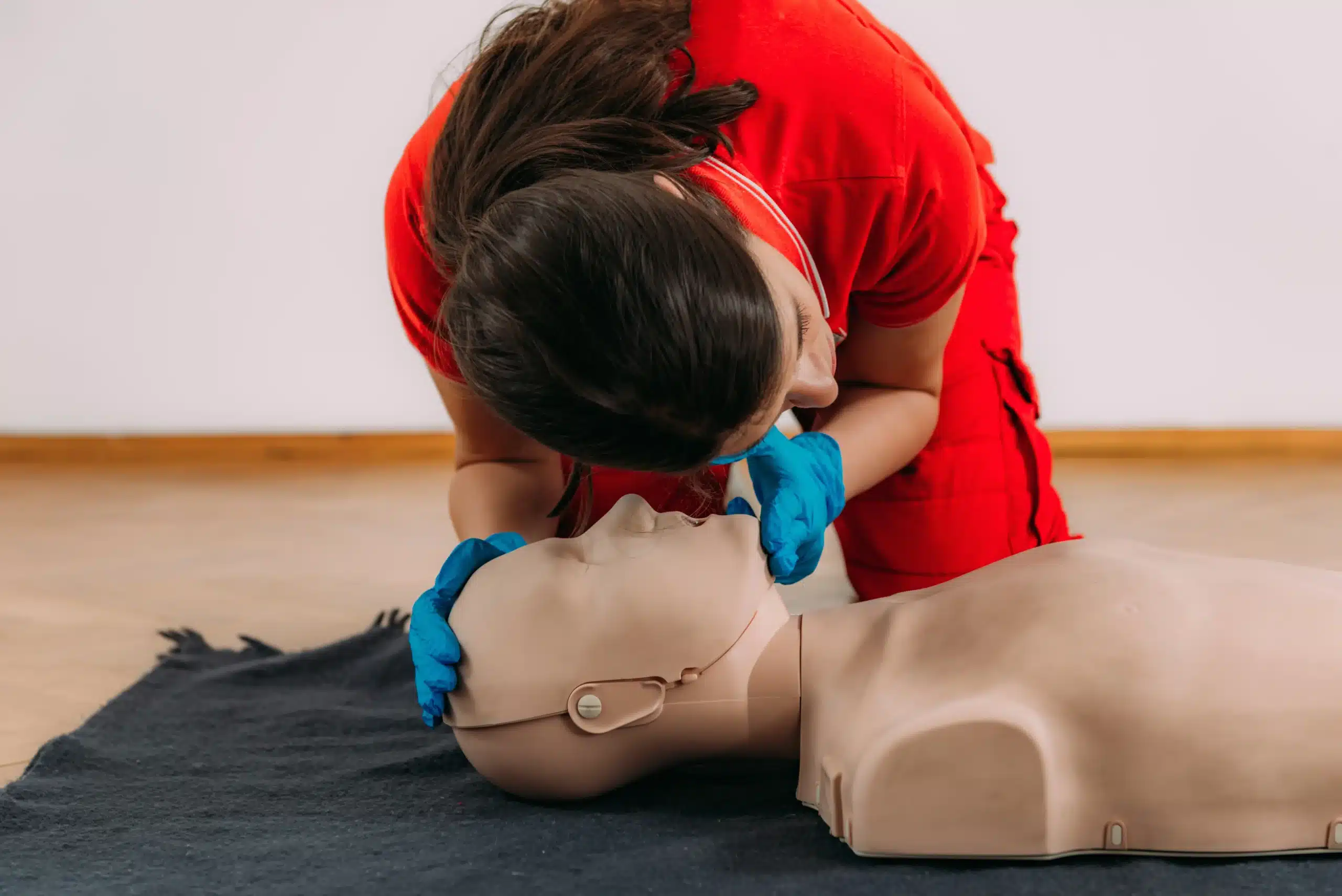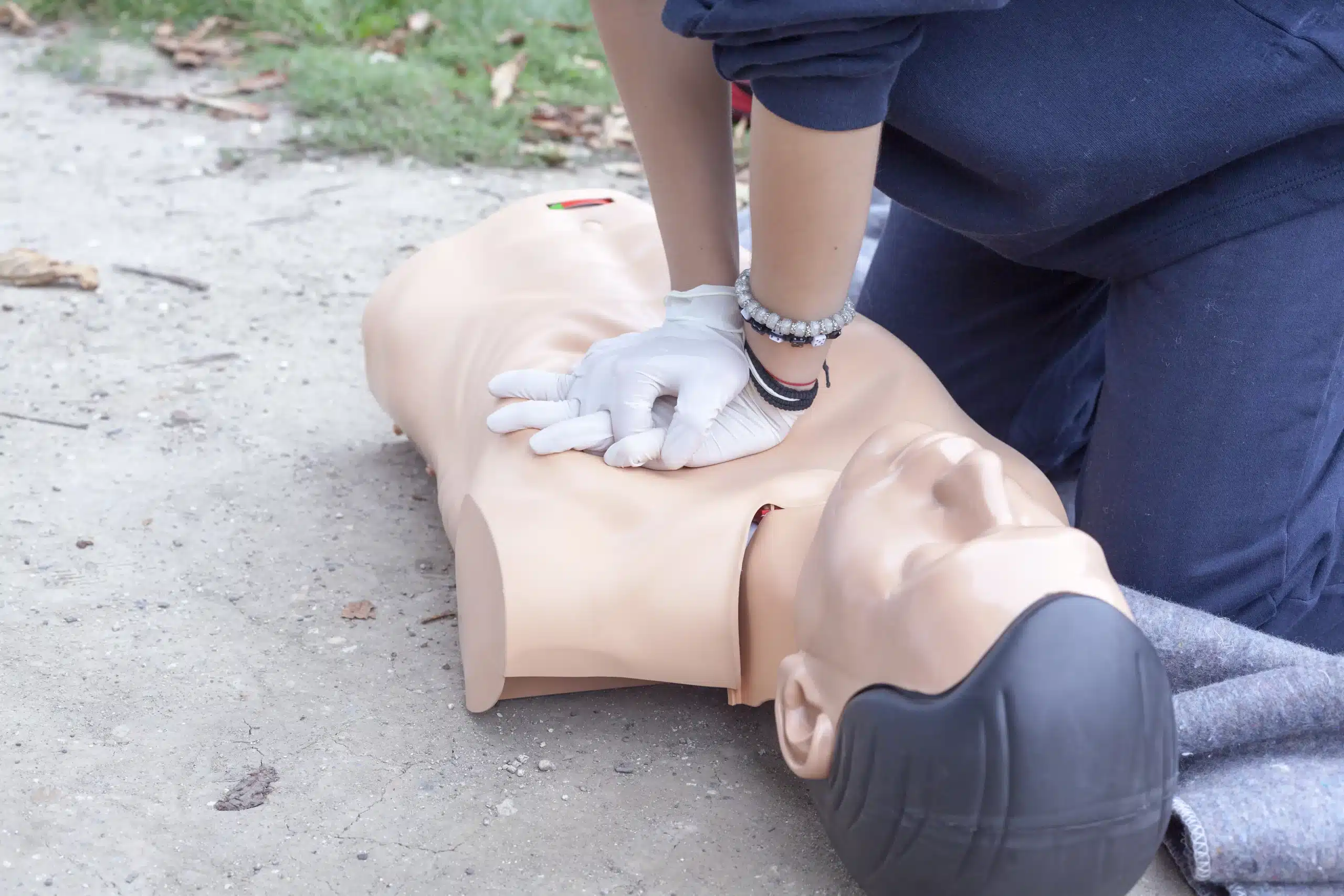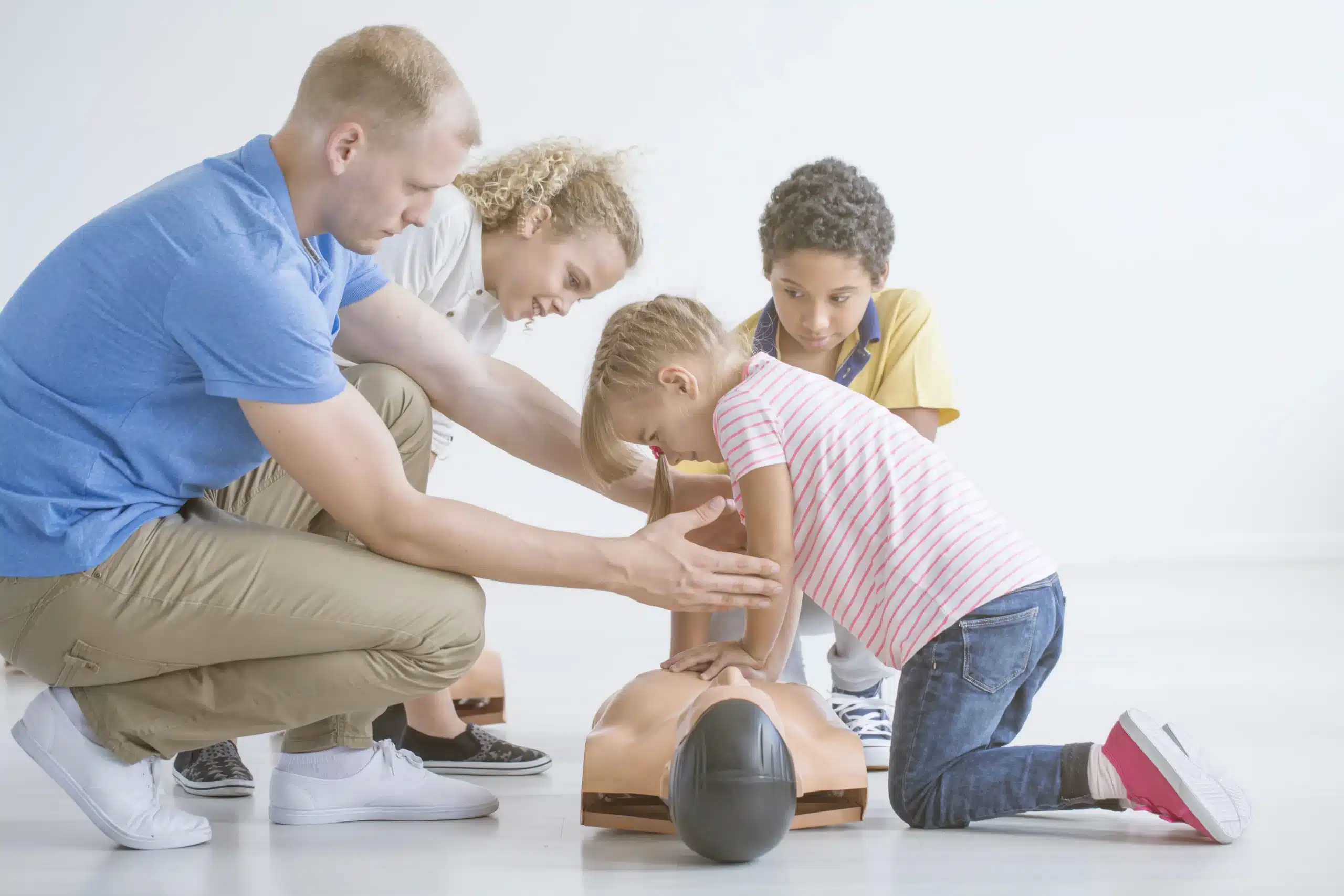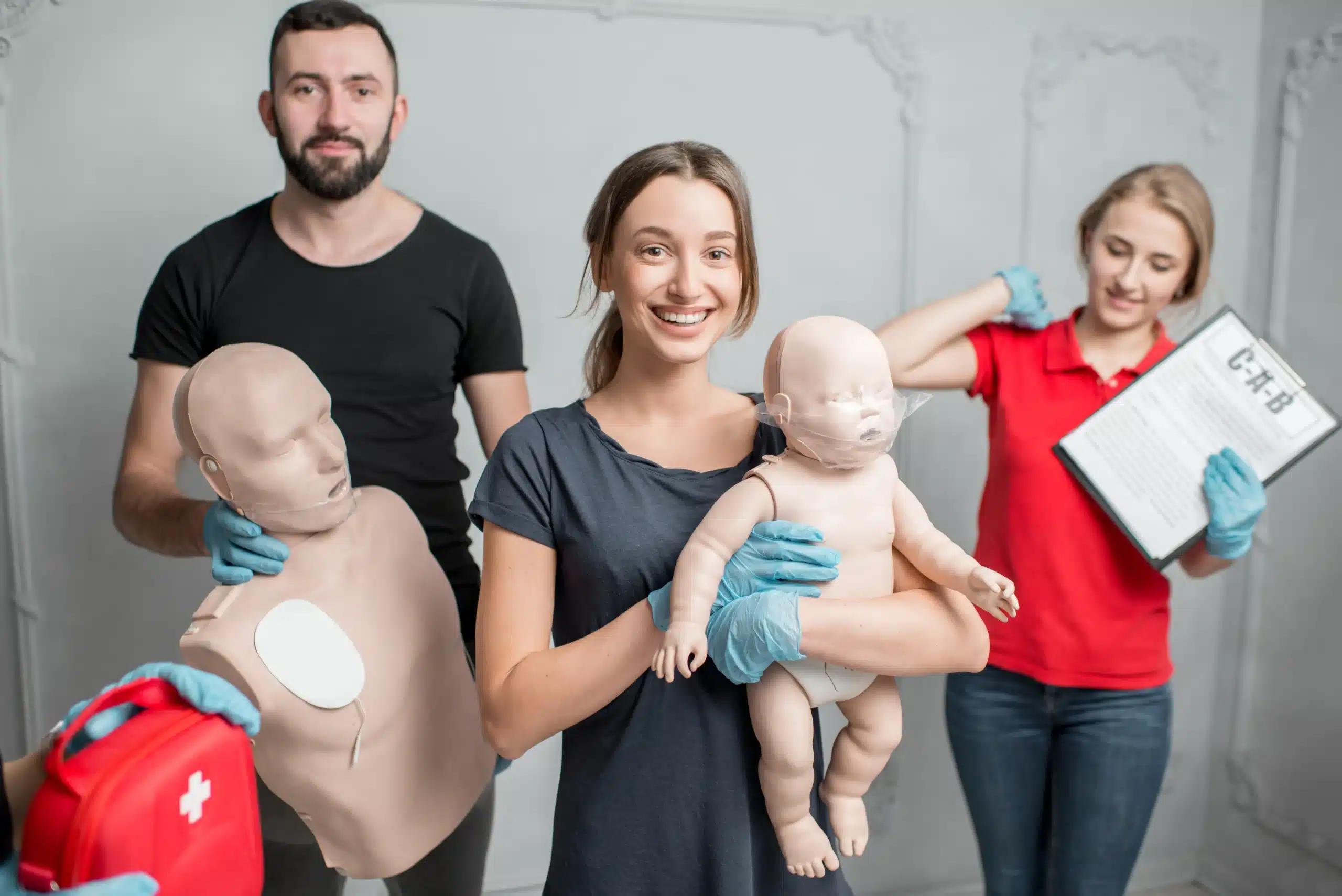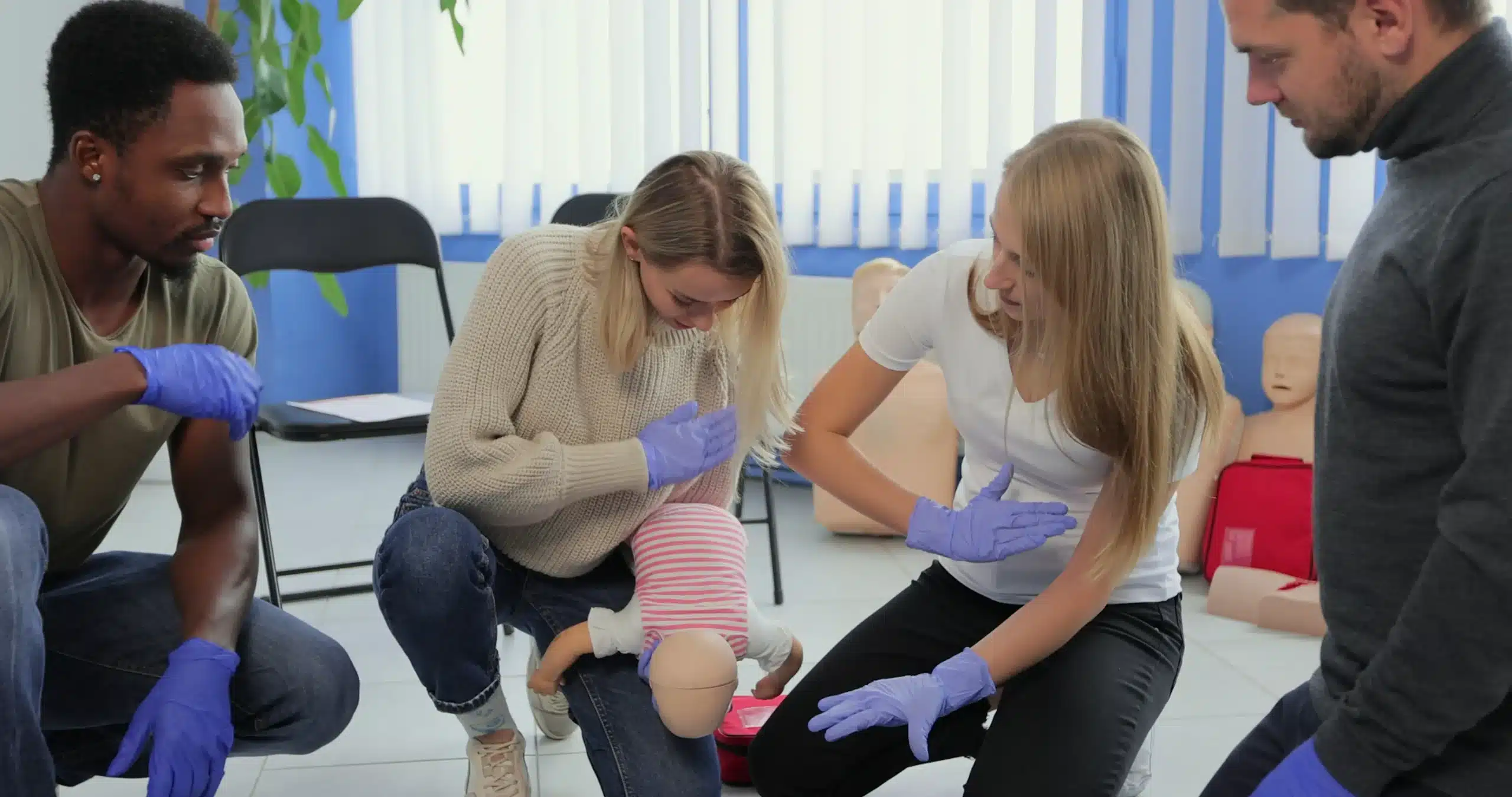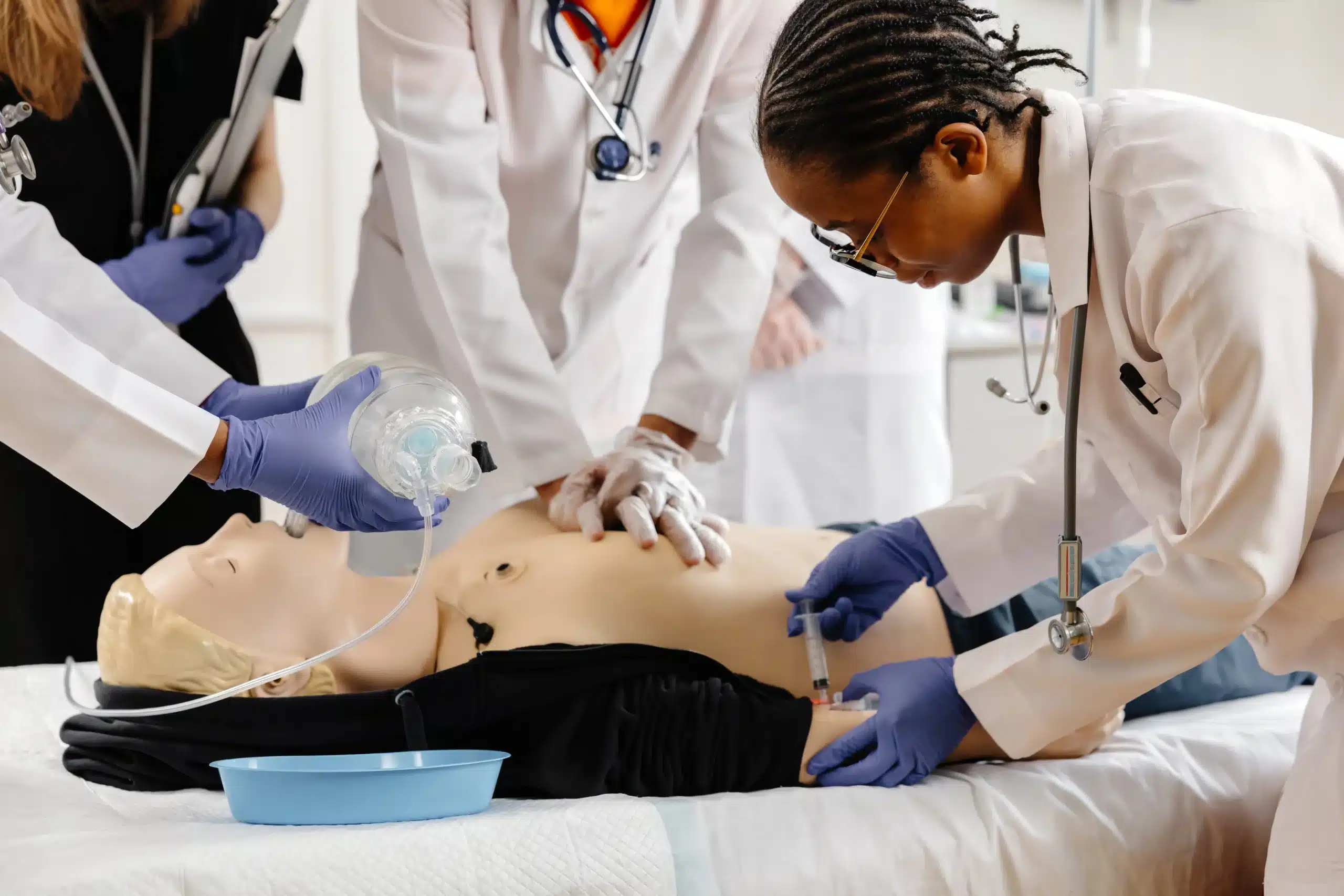Living in a bustling city like San Francisco, we’re constantly surrounded by activity, and sometimes, accidents happen, especially with kids. Whether you’re a parent, grandparent, teacher, or simply someone who cares for children, having pediatric CPR and first-aid training in SF is an invaluable skill. This guide breaks down everything you need to know about pediatric CPR and first aid, from understanding the differences between adult and child CPR to finding reputable training courses in San Francisco. We’ll explore the essential skills covered in these courses, discuss various learning options, and provide resources to help you maintain your certification and stay prepared for any situation.
Key Takeaways
- Be prepared for childhood emergencies: Learning pediatric CPR and first aid equips you to handle a range of situations, from minor injuries to life-threatening events. Seek out training that covers both CPR and a broad spectrum of first aid skills.
- Find a class that fits your needs: Consider your schedule, preferred learning style (online or in-person), and the specific certification offered when selecting a pediatric CPR and first aid course. Many options are available throughout the San Francisco Bay Area.
- Maintain your skills: CPR and first aid certifications typically expire after two years. Regular practice and refresher courses are essential to keep your skills sharp and ensure you’re always ready to respond effectively.
What is Pediatric CPR and First Aid?
Pediatric CPR and First Aid are essential life-saving skills specifically designed for infants and children. These skills empower parents, caregivers, and anyone working with kids to respond effectively to medical emergencies. A comprehensive pediatric first aid and CPR course covers a range of topics, from treating minor injuries like cuts and burns to managing life-threatening situations like choking, near-drowning, and cardiac arrest. Learning these skills can make a profound difference in the outcome of an emergency.
Why Pediatric Training Matters
Childhood accidents are unfortunately common. Knowing how to respond quickly and confidently can significantly improve a child’s chances of recovery. If faced with a medical emergency involving a child, wouldn’t you want to be equipped to help? Pediatric first aid and CPR training provides the knowledge and skills to handle these situations, offering peace of mind for parents and caregivers. It’s an investment in the safety and well-being of the children in your life. For example, over 23,000 children experience out-of-hospital cardiac arrest each year in the United States. Being prepared can truly make all the difference.
How Pediatric CPR Differs from Adult CPR
While the basic principles of CPR remain consistent, there are crucial differences in how it’s performed on adults, children, and infants. These variations account for differences in physiology and airway size. The force and depth of compressions, for instance, are modified for smaller bodies. Additionally, rescue breaths play a particularly important role in pediatric CPR, as breathing problems are a more frequent cause of cardiac arrest in children. Understanding these nuances is critical for providing effective and safe care during an emergency. A good pediatric CPR course will clearly outline these distinctions.
Common Childhood Emergencies
Pediatric first aid goes beyond CPR to address a wide range of situations children commonly face. This includes everything from minor cuts and scrapes to more serious injuries like burns, fractures, and allergic reactions. Learning how to assess these situations, provide initial care, and determine when professional medical help is necessary is invaluable. A solid pediatric first aid course will also cover how to provide emotional support and reassurance to a child during a stressful medical event, helping to calm the child and make the entire experience less traumatic. Equipping yourself with these skills allows you to confidently handle various childhood emergencies and provide the best possible care.
Best Pediatric CPR & First Aid Classes in San Francisco
Finding the right CPR and first-aid class can feel overwhelming, but several excellent options exist in San Francisco. Here are a few providers to consider:
Bay Area CPR
Bay Area CPR offers a variety of American Heart Association-certified courses, including Pediatric CPR training. With flexible scheduling and locations across the Bay Area—including San Francisco, Daly City, San Mateo, and Oakland—they make it easy to fit training into your schedule. Learn more about their CPR classes.
Children’s Council of San Francisco
The Children’s Council of San Francisco offers CPR and Pediatric First Aid workshops throughout the year. These day-long sessions provide certification through the Health & Safety Institute (HSI), preparing you to handle pediatric emergencies.
San Francisco State University
San Francisco State University’s Campus Recreation Department has a blended learning program for Adult and Pediatric First Aid, CPR, and AED training. This combined online and in-person format offers a comprehensive learning experience.
American Red Cross
The American Red Cross offers CPR and First Aid classes in San Francisco, covering both adult and pediatric care. This ensures you’re equipped to handle a wide range of emergencies.
CPR for Life
CPR for Life, also known as Heart Start CPR, is an American Heart Association Training Center offering Pediatric Advanced Life Support (PALS) and First Aid/CPR courses. They provide two-year certifications and train thousands of students every year.
1st Five Minutes
1st Five Minutes specializes in CPR, AED, and Emergency First Aid training for various audiences, from community members to professional rescuers. They also offer customized classes for organizations like schools and gyms.
What Happens in a Pediatric CPR & First Aid Class?
So, you’re thinking about taking a pediatric CPR and first aid class? Great! Knowing what to expect can help you feel prepared and confident. This section covers the typical class format, learning options, and the importance of hands-on training and expert instruction.
Class Structure and Duration
A typical pediatric CPR and first aid class covers essential life-saving skills for infants and children. You’ll learn how to recognize the signs of a medical emergency, respond appropriately, and provide care until professional help arrives. The class will typically include a combination of lectures, demonstrations, and hands-on practice. Most classes follow a structured curriculum covering infant and child CPR, choking relief, and basic first aid for common injuries like cuts, burns, and allergic reactions. In San Francisco, these courses typically run around 90 minutes and cost between $55 and $100, sometimes more depending on the provider and the specific course content. You can find more information on CPR class pricing from various providers.
Online vs. In-Person Learning
You have options when it comes to learning CPR and first aid. Online courses offer flexibility, allowing you to learn at your own pace and on your own schedule. However, online learning typically requires an in-person skills session for official certification. The American Red Cross offers blended learning that combines online coursework with in-person skills practice and assessment. Traditional in-person classes provide immediate feedback from instructors and the opportunity to practice your skills in real-time. Consider your learning style and schedule when deciding which format is best for you.
Hands-on Practice
Hands-on practice is essential for effective CPR and first aid training. It’s one thing to read about performing chest compressions or applying a bandage; it’s another to actually do it. Look for classes that emphasize hands-on training, where you’ll work with mannequins and other training equipment to simulate real-life scenarios. This practical experience builds muscle memory and confidence, better preparing you to act quickly and effectively in a real emergency.
Instructor Expertise
A knowledgeable and experienced instructor makes all the difference in your learning experience. Certified instructors bring real-world experience and a deep understanding of pediatric CPR and first aid principles. They can answer your questions, provide personalized feedback, and create a supportive learning environment. Choose a class led by certified instructors who can guide you through the material and help you master these essential skills.
Certifications & Course Info
Knowing what kind of certification you’ll receive and how to maintain it is key when choosing a CPR and first-aid class. Here’s a breakdown of what to expect:
Certification Types
Several organizations offer certifications for pediatric CPR and first aid. For example, the Health & Safety Institute (HSI) certifies participants in many pediatric CPR and first-aid classes. The American Red Cross also offers a two-year certification for Adult and Pediatric CPR/AED, covering both adult and pediatric techniques. Make sure to check with your specific course provider—like Bay Area CPR—to confirm which certification they offer. This is important if your workplace requires a specific certifying body.
Certification Renewal
CPR and first-aid certifications typically last for two years. Don’t let your skills lapse! Most providers, including the Red Cross, offer renewal courses. You can usually recertify within 30 days of your certification expiring, or even sooner if you just want a refresher.
Training Resources
Many courses provide supplemental training materials to help you retain what you’ve learned. These might include refresher activities or printable instructions to review key techniques. If your course has an online component, as many do, expect to spend about 2.5 hours completing it. You’ll need a computer or tablet and a reliable internet connection for any online portions of the class. The American Red Cross offers online learning resources as part of their blended learning approach.
Course Costs & Discounts
The cost of CPR and first-aid training in San Francisco varies. Expect to pay anywhere from $55 to $100 or more, depending on the provider, the specific course content, and the type of certification. Keep an eye out for discounts! Some providers offer deals on training supplies or reduced rates for certain groups. Safety Training Seminars offers insights into CPR class pricing and what to expect. Check with individual providers like Bay Area CPR for the most up-to-date pricing information.
Find the Right Pediatric CPR & First Aid Class
Knowing how to respond to a medical emergency involving a child is a powerful skill. Finding the right pediatric CPR and first aid class can make all the difference in preparing you for such a situation. This section covers key factors to consider when choosing a class.
Key Considerations
First, think about why you’re taking the class. Are you a parent wanting to be prepared for anything? A childcare provider needing certification for your job? Or are you simply interested in gaining valuable life skills? Understanding your motivation will help you choose the right course. As First Response Safety Training points out, having this training can empower parents to handle emergencies until professional help arrives.
Compare Courses
Next, research different course options. Look at what each course covers. Some may focus solely on CPR, while others include comprehensive first aid training. Also, check what age ranges the pediatric portion of the class covers. Infants and toddlers require different techniques than older children. Consider the class location and whether it works for your schedule and commute. Finally, compare prices. CPR and first aid courses can vary in cost, so doing your homework is worthwhile.
Flexible Scheduling
Life gets busy, so finding a class that fits your schedule is essential. Look for providers that offer weekend, evening, or accelerated courses. Some providers, like Revive CPR, prioritize flexible scheduling and same-day certification, making it easier to get certified quickly. If you need to fit a class into a tight timeframe, look for providers offering this option.
Specialized Training
If you have specific needs, consider specialized training. For example, healthcare professionals might need a more advanced course. Organizations like the American Red Cross offer a variety of courses, including blended learning options that combine online and in-person components. This allows you to complete some of the coursework at your own pace before attending a hands-on session. Choosing the right class can equip you with the confidence and skills to act quickly and effectively in an emergency.
Get Ready for Class & Beyond
So, you’ve decided to take a Pediatric CPR and First Aid class—fantastic! Knowing how to respond to emergencies involving children is incredibly empowering. To make the most of your training, here’s what you should know before, during, and after the class.
What to Bring
While your Pediatric CPR and First Aid class will provide the training materials, bring a notebook and pen to jot down notes. Comfortable clothing is also recommended, as you’ll be participating in hands-on practice. Pediatric First Aid and CPR classes in San Francisco typically cost between $55 and $100 or more, depending on the provider and course content.
Pre-Class Prep
Many CPR certification courses, like those offered by the American Red Cross, require online coursework before your in-person session. This typically takes around 2.5 hours and covers essential background information. Make sure you have a computer or tablet and reliable internet access to complete this prerequisite.
Practice & Maintain Skills
After earning your certification, remember that these skills need regular practice. Look for opportunities to refresh what you’ve learned. The American Red Cross and other organizations offer refresher courses and resources to help you stay sharp. Regular practice ensures you’re always ready to respond effectively in a real emergency.
Community Resources
San Francisco recognizes the importance of having community members trained in CPR and AED use. The city’s Community CPR Initiative highlights how critical these skills are, especially in those first few minutes before professional help arrives.
Emergency Response Apps
Consider downloading a mobile app like PulsePoint, which alerts CPR-trained individuals to nearby cardiac emergencies. These apps can connect you with someone in need and guide you to the nearest AED. Combined with your training, these tools can make a real difference.
Frequently Asked Questions
Is pediatric CPR drastically different from adult CPR? While the core principles are similar, there are key differences in technique between adult and pediatric CPR, mainly due to a child’s smaller size and unique physiology. A pediatric CPR class will teach you these important distinctions, including modifications to compression depth and the significance of rescue breaths for children.
What if I’m nervous about the hands-on portion of the class? It’s completely normal to feel a little apprehensive about the hands-on practice. Know that CPR instructors create a supportive learning environment. They’ll guide you through each step, answer your questions, and offer personalized feedback. The practice is designed to build your confidence so you’ll feel prepared to act in a real emergency.
How long does a pediatric CPR and first aid certification last, and how do I renew it? Certifications are typically valid for two years. It’s important to renew your certification before it expires to maintain your skills and stay up-to-date on any changes in guidelines. Most certifying organizations offer renewal courses, often with a streamlined process for recertification.
Are online pediatric CPR and first aid classes as effective as in-person classes? Online courses offer flexibility, but they usually require an in-person skills session for certification. While online learning allows you to learn at your own pace, in-person classes provide immediate feedback from instructors and the opportunity for real-time practice with mannequins and other training equipment. Consider your learning style and which format best suits your needs.
What should I look for when choosing a pediatric CPR and first aid class? Consider factors like the certifying organization, course content, instructor experience, class location and schedule, and cost. Think about your specific needs and whether you require a basic or more advanced level of training. Reading reviews and comparing different providers can help you find the right class for you.
